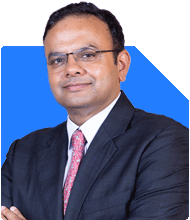Hello Sir, I am 45 years old and I have invested through SIP in the following funds since last 13 years.
1. HSBC Flexi Cap Fund - Regular Growth
2. Invesco India Midcap Fund - Regular Growth
my question is should I continue with these funds or should I shift to any other fund ? If I should shift then which fund do you suggest ?
Ans: Understanding Your Investment Goals
At 45, your financial goals are likely focused on retirement planning and wealth preservation. It's crucial to align your investments with these goals.
Reviewing Your Current Funds
You've been investing in HSBC Flexi Cap Fund and Invesco India Midcap Fund for 13 years. These funds have given you exposure to both large-cap and mid-cap stocks.
Performance Evaluation
Evaluate the performance of these funds. Check their returns, consistency, and performance against benchmarks. If they have consistently outperformed, they might still be good choices.
Risk Assessment
Assess the risk associated with your current funds. Mid-cap funds can be more volatile compared to flexi-cap funds. Ensure this risk aligns with your risk tolerance.
You've done a commendable job by investing regularly for 13 years. It shows your discipline and commitment to building wealth.
Should You Continue or Shift?
Reasons to Continue
Consistent Performance: If your funds have shown consistent performance, you may want to continue.
Low Exit Load: Exiting a fund with a low exit load or after the exit load period can save you money.
Familiarity: You're familiar with these funds and their performance trends.
Reasons to Shift
Underperformance: If the funds have underperformed compared to peers, it might be time to switch.
Changing Goals: If your financial goals or risk tolerance have changed, you may need different funds.
Market Conditions: Adapting to changing market conditions can sometimes warrant a shift in funds.
Evaluating Alternatives
If you decide to shift, consider funds that align with your goals. Evaluate their performance, risk, and consistency. Diversify across large-cap, mid-cap, and multi-cap funds.
Advantages of Actively Managed Funds
Active Management Benefits
Actively managed funds have fund managers who make strategic decisions to outperform benchmarks. They can adapt to market conditions better than index funds.
Flexibility
Actively managed funds can move in and out of sectors or stocks based on performance and market trends. This flexibility can lead to better returns.
Disadvantages of Index Funds
No Flexibility: Index funds stick to a predetermined portfolio, regardless of market conditions.
Average Returns: They aim to match, not beat, the index, leading to average returns.
Limited Downside Protection: In a downturn, index funds fall with the market, without any active measures to mitigate losses.
Personalized Recommendations
Aligning with Goals
Select funds that align with your retirement goals and risk tolerance. Consider a mix of large-cap, multi-cap, and balanced funds for a diversified portfolio.
Regular Reviews
Regularly review and rebalance your portfolio. Adjust your investments based on market conditions, fund performance, and changes in your financial goals.
Consulting a Certified Financial Planner
Consult a Certified Financial Planner (CFP) for personalized advice. They can provide tailored recommendations based on a comprehensive analysis of your financial situation.
Diversifying Your Investments
Balanced Funds
Balanced funds invest in a mix of equities and debt. They provide stability and growth, making them suitable for retirement planning.
Large-cap Funds
Large-cap funds invest in well-established companies. They offer stability and consistent returns, ideal for conservative investors.
Multi-cap Funds
Multi-cap funds invest across large, mid, and small-cap stocks. They provide diversification and potential for higher returns.
Debt Funds
Debt funds invest in fixed-income securities. They offer stability and are less volatile compared to equity funds.
International Funds
Consider international funds for geographic diversification. They provide exposure to global markets and reduce country-specific risks.
Final Insights
You've done well by investing regularly for 13 years. Evaluating your current funds and considering alternatives is wise as you approach retirement. Systematic Withdrawal Plans (SWPs) offer many benefits, including higher returns, tax efficiency, flexibility, and inflation protection. Diversify your portfolio across balanced, large-cap, multi-cap, debt, and international funds. Regularly review your investments and consult a Certified Financial Planner for personalized advice. This comprehensive approach will help you achieve your retirement goals and financial security.
Best Regards,
K. Ramalingam, MBA, CFP
Chief Financial Planner
www.holisticinvestment.in



























